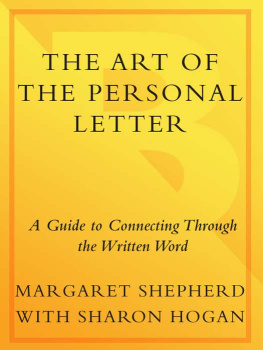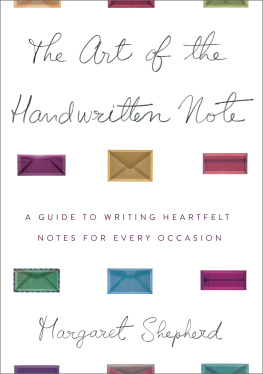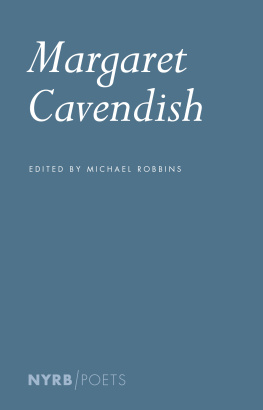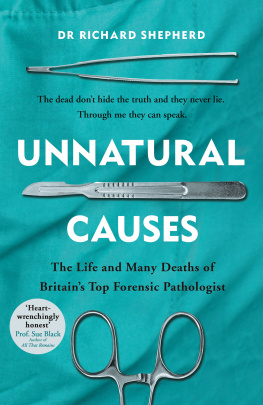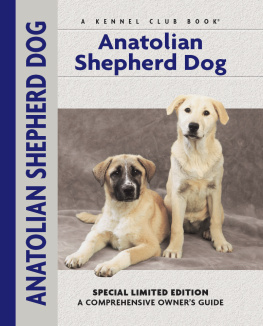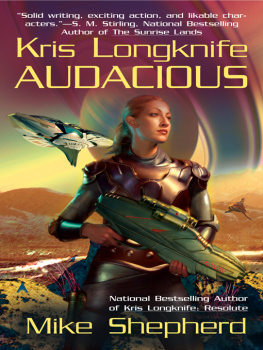Margaret Shepherd - The Art of the Personal Letter
Here you can read online Margaret Shepherd - The Art of the Personal Letter full text of the book (entire story) in english for free. Download pdf and epub, get meaning, cover and reviews about this ebook. year: 2008, publisher: Crown, genre: Home and family. Description of the work, (preface) as well as reviews are available. Best literature library LitArk.com created for fans of good reading and offers a wide selection of genres:
Romance novel
Science fiction
Adventure
Detective
Science
History
Home and family
Prose
Art
Politics
Computer
Non-fiction
Religion
Business
Children
Humor
Choose a favorite category and find really read worthwhile books. Enjoy immersion in the world of imagination, feel the emotions of the characters or learn something new for yourself, make an fascinating discovery.
- Book:The Art of the Personal Letter
- Author:
- Publisher:Crown
- Genre:
- Year:2008
- Rating:3 / 5
- Favourites:Add to favourites
- Your mark:
- 60
- 1
- 2
- 3
- 4
- 5
The Art of the Personal Letter: summary, description and annotation
We offer to read an annotation, description, summary or preface (depends on what the author of the book "The Art of the Personal Letter" wrote himself). If you haven't found the necessary information about the book — write in the comments, we will try to find it.
The Art of the Personal Letter — read online for free the complete book (whole text) full work
Below is the text of the book, divided by pages. System saving the place of the last page read, allows you to conveniently read the book "The Art of the Personal Letter" online for free, without having to search again every time where you left off. Put a bookmark, and you can go to the page where you finished reading at any time.
Font size:
Interval:
Bookmark:


CONTENTS
To MY MOTHER,

WHOSE LETTERS STILL SPEAK
TO ME.
The tongue is prone to lose the way,
Not so the pen, for in a letter
We have not better things to say,
But surely say them better.
RALPH WALDO EMERSON, Life, 1847

ACKNOWLEDGMENTS
L etter writers of all kindsfrom my role models and lifelong correspondents to my fellow pack rats and sounding boardshave helped me put this book together. I want to thank Marilyn Brandt, Fred Fiske, Janet Fiske, Winifred Kelley, Michael Cann, Frank Randall, Lily Friend, Floyd Bradley, John LeGates, Swami Kumaresan, Stan Kugell, Lorraine Fricker, Stephanie Lukes, Susan Hackley, Zak Johnson, Gail Bernstein, Geoffrey Shepherd, Grethe Shepherd, Brooke Shearer, Patty OToole, Roberta Zonghi, C. D. Collins, Society of Printers members Lance Hidy, Booth Simpson, Dan Craven, and Steve Logowitz, Writing Equipment Society Journal editor Mike West, Ken Morse at MIT, Jodi Smith of Mannersmith, and my childhood friends Tara McConnell and Mark Peterson. Letters and advice from these people, and many more, have helped me understand where the art of letter writing might be headed.
My thanks go also to the helpful staff at the Biblioteks Vagten in Copenhagen, the Houghton and Schlesinger libraries at Harvard University, the Detroit Public Library, and the Boston Public Library.
I am grateful to Derrick Purser for sharing the treasured letter of congratulations that he received as a schoolboy, as well as to those who contributed their handwriting to help me create or re-create some model letters: Elliot Rothman, Alison Shepherd Lewis, Annie Zeybekoglu, Abby Miner, Sue Toigo, Eleanor Lewis, Peter Vanderwarker, and Margaret Fitzwilliam. Mari Oye and Colin McSwiggen kindly granted permission to use the letter on Chapter 20, on behalf of the group of Presidential Scholars who signed it.
My sister, Alison, has been of particular help in tracking down family letters that we both remember but that only she had the sense to archive.
Peter Vanderwarker shot, and reshot, the author photograph on the book jacket.
I appreciate my authors A team: my excellence-demanding editor, Rebecca Cole; her ever-alert assistant, Hallie Falquet; my far-seeing agent, Colleen Mohyde; and my superorganized coauthor, Sharon Cloud Hogan.
I also thank my long-suffering cousins, siblings, aunts, husband, and offspring. It takes a whole family to write a book.
Finally, I owe more than I can ever express to all the people in my life who should have gotten more letters back from me. This book is my way of saying thank you for all those decades of loyalty and patience.
INTRODUCTION
Y ou may think the personal letter has disappeared from modern life. Like many people, you may be ready to pronounce it dead, fearing that we have lost something precious. You might bemoan the pressures that seem to have plowed the warmth of the personal letter under in an avalanche of e-mail, cell-phone calls, greeting cards, and text messages.
The personal letter is not extinct, howeverits just evolving. Letter writing is very much alive: You can see this in the surging popularity of paper stores, in the near-sacred status of fine fountain pens, in the rubber stamps and glitter pens beloved of young writers, in the perennial appeal of traditional calligraphy, in the continued audience for popular books based on historical letters, in the ever-rising prices when celebrity letters are auctioned, and even in the hours that people still devote to typing to one another. E-mail and printout letters are new formats for some of the personal letters that used to be handwritten, and they make it easier to stay in touch in new ways.
Together, tradition and innovation are revitalizing the art of the personal letter. Our yearning to connect has not gone away, nor have we outgrown most of the materials for writing or the occasions for letters. We can still write many warm, engaging letters in e-mail and printed-out pages as well as with pen and ink. Its all a matter of writing the best letters with the tools at hand.
If you are tempted to write off personal letters rather than write them, remind yourself of all the other good things people initially thought progress had wiped out of their lives. For the most important people and occasions, we put away the stainless steel and get out the family silver, turn off the fluorescent lights and light the candles. For a special treat, we skip the local movies and step out for a night of live theater. The most elegant modern weddings forgo the limo, carrying the bride and groom in an old-fashioned horse-drawn carriage. Our lives are a mix of both the cutting-edge and the time-honored arts, and our correspondence has followed this pattern. We still write letters, maybe even more than beforewe just write them in a variety of forms. E-mail and printout letters have liberated us from having to handwrite everything we send, freeing us to write our most personal letters in whatever format makes the connection best.
Far from being marginalized, letter writing continues to be respected as a timeless art. Like other arts, it connects the artist with the viewer, and it leaves the viewer changed in some way. Artists in every new generation find new forms and materials to express common human experiences. As the Victorian essayist Walter Pater wrote, Art comes to you proposing frankly to give nothing but the highest quality to your moments as they pass. A personal letter, well composed and sincerely meant, will add a dimension to your life that only art can provide.
The personal letter is still alive; there goes your excuse for not writing! The good news? With this book, you can learn to use letters to strengthen your most treasured relationships.

PART I
H OW to C RAFT a P ERSONAL L ETTER
Of all the arts in which the wise excel
Natures chief masterpiece is writing well.
John Sheffield

A s you start to acquaintor reacquaintyourself with the art of the personal letter, remember how easily you can make it a natural part of your everyday life. You already write, type, and send e-mail; you own most of the tools you need; you already have your own personal style; and you have a basic understanding of the parts of a letter. You just need to improve what you already know how to do and then put it to use more often, in order to keep you in better touch with the people who matter. As you read through the first part of this book, youll pick up dozens of useful tips and reminders that will help you send a letter whenever you have something to sayeven if its nothing more than I am thinking of you.
The first four chapters will help you consider all the forms your letters can take and how much better they can be. Then, once youve learned how to add artistry to what you write, the second part of this book will guide you in choosing the right words for lifes occasions.
Next pageFont size:
Interval:
Bookmark:
Similar books «The Art of the Personal Letter»
Look at similar books to The Art of the Personal Letter. We have selected literature similar in name and meaning in the hope of providing readers with more options to find new, interesting, not yet read works.
Discussion, reviews of the book The Art of the Personal Letter and just readers' own opinions. Leave your comments, write what you think about the work, its meaning or the main characters. Specify what exactly you liked and what you didn't like, and why you think so.

